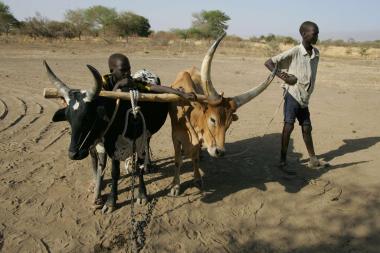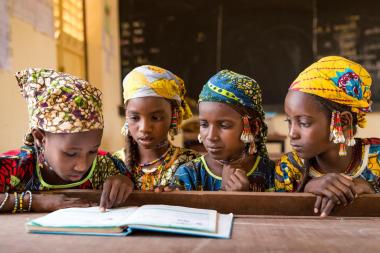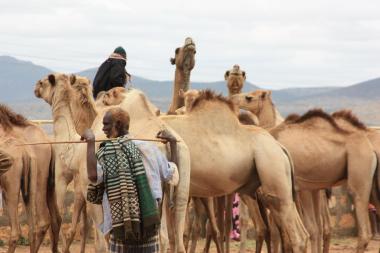Blog
Towards gender-transformative climate adaptation strategies in South Sudan
The latest findings from the work of SPARC and Kenyatta University in South Sudan’s Jonglei State reinforce the need for gender-transformative climate adaptation planning.
In sub-Saharan Africa, the increasing variability and intensity of climate change impacts pose a real risk to lives and livelihoods. More extreme weather conditions are resulting in prolonged droughts, floods and pest infestations. In many countries, these shocks are exacerbated by conflicts and governance challenges, which often lead to displacement and migration of pastoralists and agro-pastoralists.
What is often less clear in research is how these changes are impacting women and girls specifically. Women and children are 14 times more likely to die than men during natural disasters. In addition, death and destruction of property resulting from conflict disproportionately affect women, girls, the elderly and people with disabilities. This is largely because these groups have less access to economic resources, climate information and decision-making processes. Women and girls’ low societal status in relation to men means decisions are often made on their behalf.
These gendered impacts of climate change are not exhaustively documented, and data around livelihood strategies is rarely disaggregated by gender, leading to a lack of awareness about gender disparities.
Understanding the gendered impacts of climate shocks, and how communities can navigate them and become resilient, is central to generating meaningful interventions in sub-Saharan Africa. In South Sudan, the Kenyatta University-SPARC research team has been working to enhance understanding of these issues, by engaging communities in Jonglei State towards developing a ‘gender-transformative framework’ for climate resilience.
Same storm, different boats: gendered climate impacts and adaptation strategies
In June 2023, Kenyatta University-SPARC researchers conducted surveys in more than 600 households across five Payams (administrative divisions below the level of counties) in Jonglei State, South Sudan, to generate insights on the gendered impacts of extreme weather on livelihoods and potential adaptation strategies. The survey, which targeted 402 male and 206 female respondents, showed that both men and women report being affected by weather events. Respondents reported food shortage as the most critical effect of extreme weather events which impacted their livelihoods. They also listed crop failure, displacement, livestock death, and destruction of property as key impacts. The main difference is interclan conflict: whereas 95% of men said they were affected by a rise in interclan conflicts following extreme weather events, only 70% of women reported this as an issue.
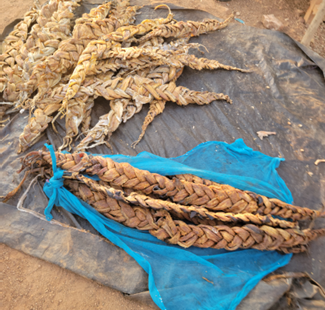
Traditional method for fish preservation by women in Bor town, Jonglei State. (Credit: KU-SPARC Project, February 2023)
However, while both men and women report impacts of climate change, their methods of coping with these shocks differ hugely. The key coping strategies for women include drying and smoking meat and fish, drying vegetables and nuts, and selection and preservation of valuable seed, whereas men rely on migration, and the temporary transfer or sale of livestock and animal products as coping strategies. Additionally, men rely on improved breeding practices, cattle raiding, culling of weak animals, using strategic pasture reserves, planting fodder and the purchase of hay or animal feeds.
These gendered differences in coping strategies have important implications. Men’s top coping strategies – migration and livestock sales – have potential negative effects on women. For example, migration of men often results in women and children being left behind to fend for themselves. Furthermore, sales of livestock and products are mainly in the domain of the men and thus the income accrued does not necessarily enhance women’s livelihoods.
It is also notable that women’s coping mechanisms in Jonglei State revolve around supply of food and domestic management, while men’s relate to livestock keeping. The top coping strategies applied by men denude the household of immediate supplies of milk and meat, implying a crisis for women in securing enough food for the family.
Towards gender-transformative adaptation planning
The data above reinforces what is already known: that the impacts of climate change are not gender neutral because of variations in the rights and opportunities of men and women. Climate change amplifies existing gender inequalities, with particularly negative impacts on women, girls and most at-risk populations, given their less privileged positions in society. Adaptation strategies that do not consider the gendered ways in which people experience shocks will end up reinforcing existing disparities or introducing new ones.
‘Gender-transformative’ climate adaptation initiatives aim to address the root causes of this gender inequality. A transformational approach to climate change adaptation planning would require women to become agents of change by being actively involved in decision making and planning. It would also involve giving both men and women the capacity to produce more in their realms of production, whether in crops or livestock. This is partly achieved through improving access to economic resources, climate information and decision-making power for both men and women.
One route into this gender-transformative change is through indigenous knowledge. The results of this study show that both women and men have specific, gendered indigenous knowledge on how to manage natural resources. This knowledge should be the starting point of building resilient communities and thus developing a gender-transformative framework. For example, women’s knowledge on seed selection and preservation, as well as food preservation, can be built into food security measures. As women's domestic roles often leave them with limited or no time to access information, they should be targeted with extension services and climate information services using appropriate media that is readily accessible or adaptable to their needs, such as local language radio stations or updates during village meetings with the chief. The use of mobile technology can also be tapped into to provide locally appropriate messaging on climate-related information.
Another key part of gender-transformative adaptation planning is to provide women and at-risk groups with tailored training. Indeed, respondents to the Kenyatta University-SPARC household survey consider training as an important component for improving livelihoods: it was mentioned by 106 respondents, who said that government training would help build much-needed skills and self-reliance. The skills mentioned by men and women differed in some ways, with men referencing training in how to manage flooding, establish agriculture, fishing, or build permanent dykes, and women focusing on issues related to ‘empowerment’, ‘capacity’ and provision of ‘boreholes’ for water supply.
Such strategies can be a starting point for the Government of South Sudan, which has already announced its intention to integrate a gender perspective into national-level climate change policies and strategies, and is targeting a 35% representation of women in decision-making related to climate change, according to its most recent Nationally Determined Contribution (NDC) to the United Nations Framework Convention on Climate Change. In practice, this will involve utilising women’s and men’s indigenous knowledge, and making information, training and technologies for climate change adaptation and mitigation accessible to, and relevant for, both men and women.
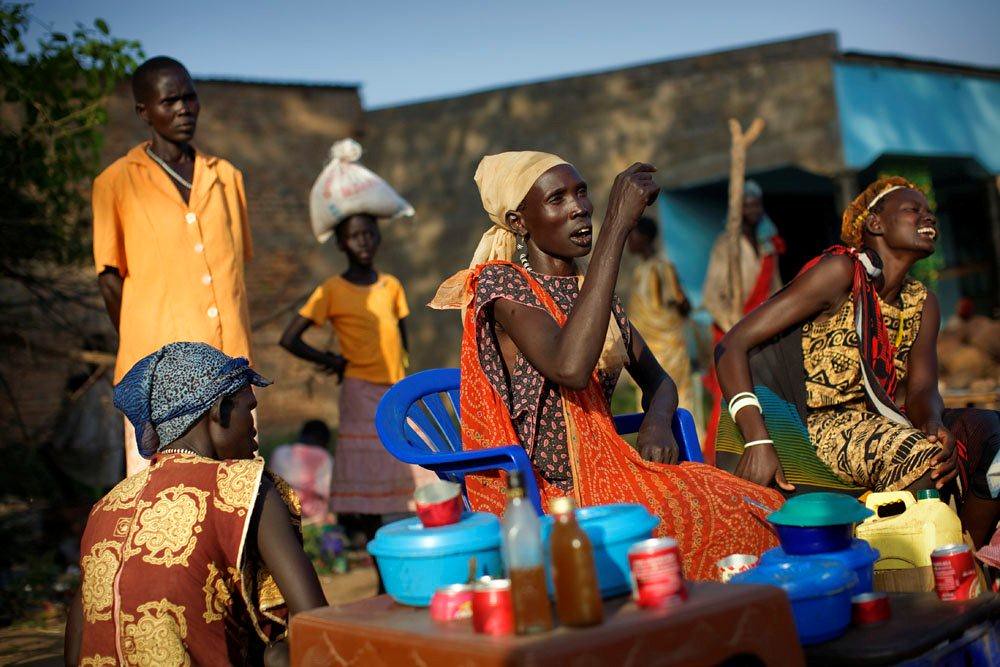
Women in a market in Lakes State, South Sudan - Image by Brian Sokol/UNDP South Sudan
